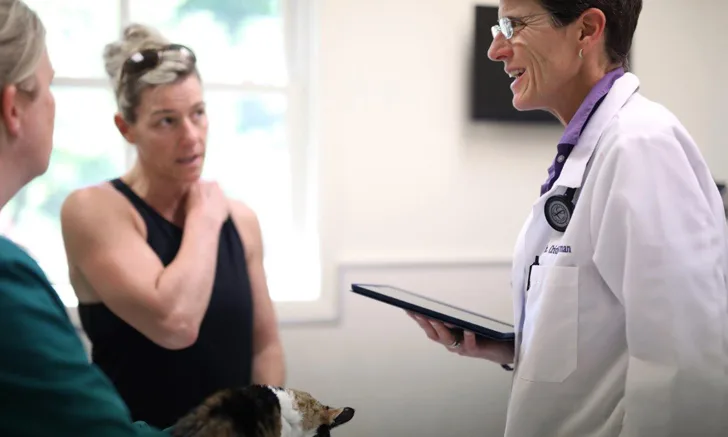How Appearance Can Influence Pet Owner Perception
Zenithson Ng, DVM, MS, DABVP (Canine & Feline), University of Tennessee

In the Literature
Bentley E, Kellihan H, Longhurst C, Chun R. Effect of attire on client perceptions of veterinarians. Vet J. 2020;265:105550.
The Research …
This study surveyed 505 pet owners regarding their perceptions of clinicians based on attire. Respondents reviewed photos of faceless Caucasian men and women in both blue surgical scrubs and business casual attire—with and without an added white coat—and rated their comfort interacting with and perceived competence of clinicians. Higher levels of comfort and competence were associated with surgical scrubs versus business casual clothing. Addition of a white coat increased comfort level.
Because this study was limited to an academic specialty hospital in the midwestern United States, results may differ with other clinics and/or demographics. Faces were not visible, but skin tone was suggestive of a Caucasian demographic; this may also affect individual implicit bias and judgment. In addition, business attire can vary (eg, in style, color, fit, cleanliness, functionality) among individuals, possibly affecting perceptions.
The experience of veterinary patients should also be considered. Whereas a white coat enhanced owner opinion, patients may experience “white coat syndrome,” in which fear, anxiety, and hypertension are associated with the presence of a white coat. Although this concept is extrapolated from human medicine, absence of a white coat may reduce stress in veterinary patients that have had a previously negative experience with a human in a white coat.
… The Takeaways
Key pearls to put into practice:
Although owners should not base opinions on clothing in place of actions and/or communication skills, first impressions can be lasting, and an owner’s first impression may be based on the clinician’s profile photo on the clinic’s website. It is both acceptable and professional to be photographed in a white coat and scrubs.
Clothes worn in the clinic should fit well and be clean, tidy, and functional. An extra set of clothing should be kept in the clinic in case of unexpected staining events. This is especially true for white coats, which can be easily stained and should be disinfected, cleaned, and pressed regularly. Wearing the same white coat between patients can increase the risk for infection.
A clinic dress code may be beneficial. Regardless of the attire worn, it should be consistent among all staff members and should be universally decided on based on the culture of the clinic and its clientele. Staff with a similar appearance can indicate a professional and unified team that reflects quality care.
You are reading 2-Minute Takeaways, a research summary resource presented by Clinician’s Brief. Clinician’s Brief does not conduct primary research.